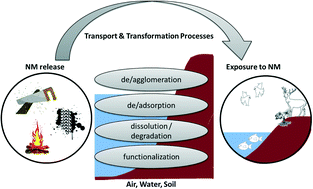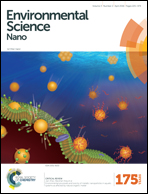Modeling nanomaterial fate and uptake in the environment: current knowledge and future trends†
Abstract
Modeling the environmental fate of nanomaterials (NMs) and their uptake by cells and organisms in the environment is essential to underpin experimental research, develop overarching theories, improve our fundamental understanding of NM exposure and hazard, and thus enable risk assessment of NMs. Here, we critically review the state-of-the-art of the available models that can be applied/adapted to quantify/predict NM fate and uptake in aquatic and terrestrial systems and make recommendations regarding future directions for model development. Fate models have evolved from substance flow analysis models that lack nano-specific processes to more advanced mechanistic models that (at least partially) take nano-specific (typically non-equilibrium, dynamic) processes into account, with a focus on key fate processes such as agglomeration, sedimentation and dissolution. Similarly, NM uptake by organisms is driven by dynamic processes rather than by equilibrium partitioning. Hence, biokinetic models are more suited to model NM uptake, compared with the simple bioaccumulation factors used for organic compounds. Additionally, biokinetic models take speciation processes (e.g. particulate versus ionic uptake) into account, although identifying essential environment-specific processes to include in models remains a challenge. The models developed so far require parameterization, calibration and validation with available data, e.g. field data (if available), or experimental data (e.g. aquatic and terrestrial mesocosms), rather than extension to more complex and sophisticated models that include all possible transformation processes. Collaborative efforts between experimentalists and modelers to generate appropriate ground-truth data would advance the field most rapidly.

- This article is part of the themed collection: Modelling in Environmental Nanotechnology


 Please wait while we load your content...
Please wait while we load your content...